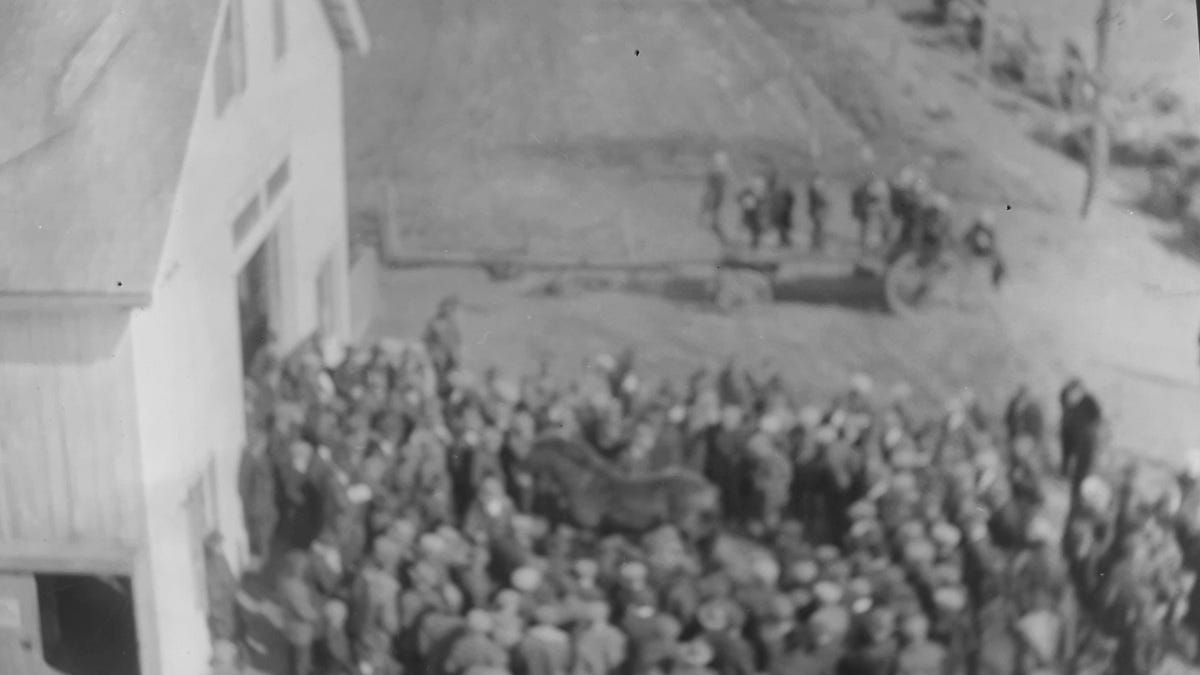California
California Is Signaling a Recession. Will the Rest of the Country Follow?

The U.S. unemployment rate has fallen to historically low levels in the past two years, even as the Federal Reserve has ramped up interest rates to tamp down inflation. But record-low unemployment isn’t the case any more in California, the nation’s most populous state, where a steadily climbing unemployment rate might be moving beyond normalization and into treacherous territory.
It is tempting to write off California’s unemployment spike as a localized effect of the tech industry’s rebalancing. Yet, based on at least one economic indicator, the state’s labor outlook is signaling that a nationwide downturn could be in the offing.
California’s unemployment rate increased from 3.83% in August 2022 to 4.5% in May 2023; the national unemployment rate was 3.7% last month. That means California’s three-month moving average rose by 0.63 percentage points relative to its low in the past year, putting the state in or near recession territory, according to the well regarded Sahm rule.
The rule is named for economist Claudia Sahm, whose research found that when the three-month moving average of the national unemployment rate rises by 0.5 percentage points or more, relative to its low during the previous 12 months, it signals a recession.
The Sahm rule can be applied to state economies, too. Although state unemployment data haven’t been tracked as long as national statistics, the Sahm rule generally holds up on a state level, says Julia Pollak, chief economist at the employment site ZipRecruiter. Once the rise in the unemployment rate exceeds the 0.5 percentage-point threshold on a three-month average, it tends to climb by another 1.5 to two percentage points in the coming months, she has found.
“A cycle sets in whereby rising unemployment—either through people staying unemployed longer and finding it harder to find new jobs, or more layoffs—keys people to cut back on their spending, which leads to further reductions in demand for labor,” Pollak says.
Sahm tells Barrron’s that California’s current unemployment rate, and particularly the changes in that rate in the past year, are “blinking yellow.”
California’s rising unemployment has been driven, in part, by the tech sector’s recent stumbles after years of exuberant growth. That weakness has been spilling into other industries. Finance, for example, is seeing a dearth of initial stock offerings and deals. Industries dependent on advertising are also experiencing a contraction.
Four broad employment sectors in California are either shrinking or stagnant, says Chris Tilly, an economist at the University of California, Los Angeles, who focuses on labor trends. They are construction, durable goods, wholesale, and information, which includes media and entertainment jobs. “The big hit is in residential construction,” he says.
Related industries, such as furniture, wood products, architecture, and structural metal also have seen some weakness, he says.
The normalization of interest rates after an era of nearly free money helped quash technology stocks — and the tech sector’s rampant spending. Hybrid work and work-from-home schedules adopted during the Covid pandemic also are darkening the employment picture in California. “This is kind of a remote-work-related, local recession,” Pollak says.
Of the estimated 6.9 million remote workers in the U.S., the largest concentration by far is in California, according to research from Revelio Labs. That has hurt the state’s downtown businesses, including restaurants and retailers, leading to knock-on job cuts far from Silicon Valley.
Beyond rising unemployment, California is grappling a reputation for regulation, high corporate tax rates, and a housing affordability crisis. Conning’s State of the States municipal-credit-quality rankings scored California No. 42 out of 50 this year, 14 spots lower than in 2022. While the growth rate of the state’s gross domestic product per capita was stronger than that of most other states last year, as was its personal income per capita, tax collections lagged dramatically.
As Tilly says, it’s difficult to call California a “bad economy.” The state economy, the largest in the U.S., grew by an annual rate of 0.4% in 2022. With GDP still positive, he says, “California is not in a recession at this point, but it is a risk.”
California isn’t the only state whose unemployment trends crossed the Sahm threshold. Unemployment trends in Oregon, Virginia, and Washington also triggered the Sahm state rule in recent months. But unlike California, the other three states recorded a drop in the unemployment rate in May.
Sahm says she would recommend using a six-month moving average of the unemployment rate to gauge whether a state economy is in or approaching recession, particularly in the case of smaller states. California’s unemployment picture has triggered the Sahm rule based on both a three- and six-month moving average.
The Sahm rule reflects more of a historical pattern than a “law of nature,” Sahm says. But in a handful of cases, state economies have triggered the Sahm rule ahead of a national recession, in effect acting as a bellwether.
“When there is a national recession, typically the state with a disproportionate share of jobs in the industry most affected during that particular recession triggers the rule first,” Pollak says.
Ahead of the 2008-09 recession, for example, Pollak says Florida’s rising unemployment rate triggered the Sahm rule — no surprise, perhaps, given its significant exposure to the subprime housing market, whose problems helped set off the financial crisis of that period.
In California’s case, the state’s current divergence from national trends is the largest since the state unemployment data series began in the 1970s. “In principle, an unemployment rate that has risen notably is worth keeping an eye on because there are cases in which it is the precursor to a larger national recession,” Sahm says.
Additionally, many of the positive labor trends peaked last fall in California, Tilly says. “What that says to me is, California may be a leading indicator for what’s happening elsewhere,” he says. “California looks less like an outlier, and more like a leader in a downturn that could end up in a soft landing or a recession.”
There have been instances in which state economies triggered the rule without a corresponding nationwide recession. Usually, on a state level, the rule tends to correspond with a localized labor downturn or natural disaster. Louisiana and Mississippi, for example, triggered the rule in 2005 with Hurricane Katrina. Texas has also hit the Sahm threshold without any national downturn in the past, due to its ties to the volatile energy industry.
So far, national data don’t mirror California’s economic trends. The national unemployment rate rose in May from April’s record low of 3.4%, but remains historically low. So long as that is the case, Sahm believes the U.S. won’t enter a recession.
Yet, with many economists predicting a recession starting later this year or early in 2024, indicators like California’s unemployment merit more attention nationally. “Where we are headed is unclear, but regardless, we should be ready to help people,” Sahm says.
Write to Megan Leonhardt at megan.leonhardt@barrons.com

California
Meghan Markle filming Netflix show on California cannabis farm embroiled in controversy: report

One of the filming locations for Meghan Markle’s highly-anticipated cooking show is reportedly a cannabis farm marred by controversy.
The Duchess of Sussex, 42, has been shooting the Netflix series in two California locations: a $5 million home in Montecito belonging to Tom and Sherrie Cipolla and a farm owned by the cannabis-supplying Van Wingerden family in the nearby seaside city of Carpinteria, the Daily Mail reported.
The Van Wingerdens are the area’s largest vendors of legally produced cannabis, according to the website.
Markle’s film location, dubbed Farmlane, is owned by David and Cindy Van Wingerden, who turned their flower farm into a marijuana mecca in 2015. They now sell cannabis flowers and pre-rolled cannabis joints.
But the Van Wingerden family’s operation and other cannabis farms have had the neighborhood up in arms over the pungent weed fragrance contaminating the air.
Local Carpinteria residents filed 2,340 odor complaints from mid-2018 to 2022, according to the website.
In September, homeowners in the area filed a class-action lawsuit against two weed farms, unrelated to the Van Wingerden’s business, with claims that their property values had been severely damaged due to the “sewer-like” smells.
“The neighborhood surrounding their property has a thick, heavy, strong stench of cannabis on a near daily basis,” the lawsuit states.
Angry citizens said their homes and clothes reeked of marijuana and that some people were experiencing breathing problems, headaches and nausea.
Page Six confirmed in March that the former “Suits” actress would collaborate on a Martha Stewart-esque show tying into her newly launched lifestyle brand, Montecito Riviera Orchard.
The wife of Prince Harry has already debuted the first product of her cookware and home needs company with a jar of strawberry jam sent to her closest high-powered friends.
An insider told Page Six Style at the time that the business would focus on home, garden, food and general lifestyle wares.
“She’s been working on this for over a year, and it’s all the things that are close to her heart — all the things she’s passionate about,” an industry source said.
A trademark application obtained by Page Six Style revealed that the company would sell cookbooks, an assortment of edible treats like jellies and spreads and tableware staples like cutlery, table linens, drinkware and more.
California
EV market share sags in California, though EV sales are up

It’s a complicated time for the nation’s largest EV market. California EV sales increased in the first quarter of 2024, but market share still fell, according to a new quarterly report from the California New Car Dealers Association (CNCDA).
The absolute number of EVs sold in California grew from 89,741 in the fourth quarter of 2023 to 90,296 in the first quarter of 2024, the report found. But EV market share still decreased from 21.5% at the end of 2023 to 20.9% in Q1 2024. That’s because new-car registrations grew overall, with even more non-electric vehicles being sold. The rise of EV sales by volume rather than share is a trend that continues from the previous quarter.
2024 Tesla Model Y. – Courtesy of Tesla, Inc.
Tesla’s EV sales lead in California also continues to shrink, the report found. Tesla registrations were down 7.8% from the previous quarter, which itself saw a 9.8% decline in registrations for the once-California-based automaker.
Without a deeper dive into the trends, it might be argued that sagging Tesla sales, not sales of EVs of other brands, are what have caused the recent flattening for EVs in California and elsewhere. That’s because Legacy automakers are selling more plug-in vehicles, the report noted. Mercedes-Benz and BMW saw the highest increases in California in Q1, posting 3% and 2.4% gains, respectively.

2024 BMW iX
EV sales through franchised dealerships also increased 14% in Q1, while direct sales—the model used by Tesla and some startup automakers—saw a 3% drop. Franchised dealerships account for 66% of “alternative powertrain types” in California, according to the CNCDA.
Even with EV sales rising in the rest of the country, California remains near a third of the nation’s EV sales. And even with this market-share hiccup, in the state, one of four new vehicles sold in California has a charge port—although some are plug-in hybrids rather than all-electric models.
California
A look at beavers’ important role in California’s wildfire resistance

SACRAMENTO — Nature’s firefighters might not be what you think.
Beavers. They’ve had a bad reputation. Many call them pests, but they’re far from it. They play such an important role in our ecosystem that their work can even curtail wildfires. Beavers are a keystone species, which means their existence benefits many types of plants and animals.
The California Department of Fish and Wildlife (DFW) is recognizing the role beavers play, implementing a beaver restoration program just last year to aid in drought and wildfire resistance.
“Beaver wetlands are uniquely resistant to the effects of drought and then subsequently to the effects of wildfire,” said Emily Fairfax, who is an assistant professor of geography.
For generations, beavers have been classified as a nuisance. Hundreds of permits are sought after each year by landowners to allow them to kill beavers.
Their knack for engineering doesn’t always agree with human engineering. We like to build roads and houses. They like to flood everything and chew down wood.
“While that can be annoying, it’s that flooding and tree chewing that gives you those benefits like drought and fire resistance,” Fairfax said.
“As we build more and more in California, and in other states, we actually are eliminating wetlands and the beavers try to put them back in,” said wildlife rescuer Michele Dodge.
Without beavers, we could face total degradation of our riverscapes, causing more wildfires. In fact, research is showing their work is helping to prevent wildfires altogether, and that’s why the DFW is turning to beavers as a helpful tool.
“I’ve been studying this the last ten years or so using satellite data and field visits to go out and find these places where beavers have been engineering and see whether or not they burn during wildfire,” Fairfax said. “Pretty much across the board, they’re not burning.”
Beavers create patches of fire refugia, places that either don’t burn at all or burn at a low intensity that’s actually helpful for a variety of plants and animals. The patches are fireproof in even our most intense fires like the Beckwourth and Dixie fires.
“You’re going to be seeing forests that have completely burned the pine trees from roots to tips. The soil is ash at this point and it’s silent cut to, and then you turn the corner and you’ll get to the beaver wetland and it’s completely different,” Fairfax said.
Even in Rancho Cordova, the beavers are helping the environment thrive. Their dams create a safe place for geese to nest and lay their eggs.
“It also creates a safe zone, so if there is a fire animals have a place to retreat,” Dodge said.
In the beaver wetlands, you’ll find lush green landscapes full of life. Beavers like to spread the water around, essentially creating a safe haven from a wildfire. Now with the DFW’s restoration program, beavers have a place to go.
“I’m really excited they’ve done that,” Dodge said. “In the past, if somebody trapped beavers they were killed that was the only solution. Now all the sudden, fish and wildlife, we are creating places we want them released.”
The best part is we don’t have to pay these guys. They just do it for free because that’s what they’re naturally inclined to do. They’re nature’s tool against wildfires.
-

 Education1 week ago
Education1 week agoVideo: Dozens of Yale Students Arrested as Campus Protests Spread
-

 News7 days ago
News7 days agoLarry Webb’s deathbed confession solves 2000 cold case murder of Susan and Natasha Carter, 10, whose remains were found hours after he died
-

 World6 days ago
World6 days agoHaiti Prime Minister Ariel Henry resigns, transitional council takes power
-

 Politics1 week ago
Politics1 week agoFetterman hammers 'a–hole' anti-Israel protesters, slams own party for response to Iranian attack: 'Crazy'
-

 World1 week ago
World1 week agoPeriod poverty still a problem within the EU despite tax breaks
-

 World7 days ago
World7 days agoUS secretly sent long-range ATACMS weapons to Ukraine
-

 News6 days ago
News6 days agoFirst cargo ship passes through new channel since Baltimore bridge collapse
-

 World1 week ago
World1 week agoTurkey’s Erdogan meets Iraq PM for talks on water, security and trade




















